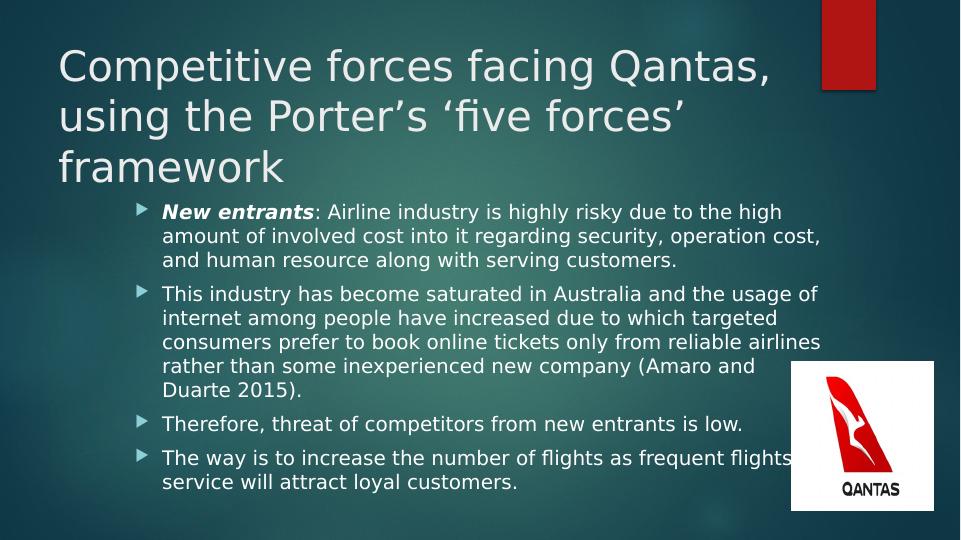Competitive Forces Facing Qantas: Porter's Five Forces Analysis
16 Pages1566 Words439 Views
Added on 2023-04-21
About This Document
This presentation provides an analysis of the competitive forces facing Qantas, using Porter's Five Forces framework. It examines the bargaining power of buyers and suppliers, the threat of substitutes, and the potential for new entrants in the airline industry. The presentation also includes a SWOT analysis of Qantas' competitive strategy and an overview of the company's domestic and international corporate strategy since 1992. Additionally, it discusses Qantas' accounting policy choices, financial performance and position, and provides recommendations for future financial decisions.
Competitive Forces Facing Qantas: Porter's Five Forces Analysis
Added on 2023-04-21
ShareRelated Documents
End of preview
Want to access all the pages? Upload your documents or become a member.
Porter`s Five Forces Model and SWOT Analysis of Qantas
|4
|985
|335
Competitive Forces Analysis of Qantas
|15
|1240
|121
Business Analysis of Qantas Airways
|13
|2818
|89
Porter’s Five Force Analysis on Qantas Airlines
|7
|1886
|343
Analysis of Porter’s Five Forces of Qantas
|11
|2689
|12
DEPSTG Analysis and Megatrends in Australia: A Case Study of Jetstar
|11
|1792
|475




